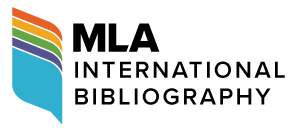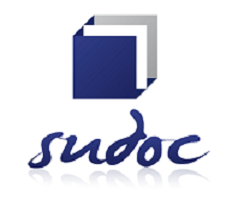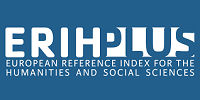Rebuilding the Symbolic Boundaries between the East and West: Occidentalism in 'The Battle at Lake Changjin'
DOI:
https://doi.org/10.7203/HYBRIDA.6.26244Keywords:
war film, China, propaganda, Orientalism, Occidentalism Abstract
Abstract
The article explores the concept of Occidentalism and its portrayal in the recent Chinese blockbuster film, The Battle at Lake Changjin. The author contends that the movie represents a resurgence of Occidentalism in Chinese popular cinema, reinforcing the East-West binary and promoting a narrative of Chinese superiority. The discussion begins by contextualizing the historical origins of the East-West binary and its role in shaping Western identities and justifying practices like colonialism. The article also highlights the intricate complexities and contradictions within the film, as well as its implications for China’s cultural and political landscape, specifically the shift in China’s attitude towards the West during President Xi Jinping’s tenure. The article emphasizes the growing closure of the Chinese mindset, exemplified by the adoption of “wolf-warrior diplomacy” and the portrayal of the West as an adversary in the media. This shift is also discernible in Chinese popular cinema, exemplified by films like Wolf Warrior 2, which depict Chinese protagonists triumphing over villainous Western characters. The author underscores the essentialist portrayal of the Chinese in The Battle at Lake Changjin as morally and spiritually superior to their Western counterparts. By creating a stark binary opposition between the East and West, the movie accentuates cultural differences and constructs them as insurmountable. Additionally, the article explores the film’s narrative structure, its influences from Western and Chinese cinema, and the depiction of key characters, including General Douglas MacArthur and Mao Zedong.
 Downloads
Downloads
 References
References
Berry, C. (2018). Wolf Warrior 2: Imagining the Chinese Century. Film Quarterly, 72(2), 38–44. https://doi.org/10.1525/fq.2018.72.2.38
Bonnett, A. (2004). The Idea of the West: Culture, Politics and History. Palgrave Macmillan.
Brzeski, P. (2021, October 11). China Box Office: ‘Battle at Lake Changjin’ Marches Past $600M. The Hollywood Reporter. https://www.hollywoodreporter.com/movies/movie-news/battle-at-lake-changjin-box-office-1235029428/
Chen, X. (2002). Occidentalism: A Theory of Counter-discourse in Post-Mao China. Rowman & Littlefield.
Gates, P. (2005). “Fighting the Good Fight:” The Real and the Moral in the Contemporary Hollywood Combat Film. Quarterly Review of Film and Video, 22(4), 297–310. https://doi.org/10.1080/10509200590475788
Guan, F. (2022). The Art of War. Dissent Magazine. https://www.dissentmagazine.org/article/the-art-of-war
Lemaître. (2022, October 16). The West, China’s designated enemy. Le Monde.Fr. https://www.lemonde.fr/en/international/article/2022/10/16/the-west-china-s-designated-enemy_6000533_4.html
Liu, K. (2003). Globalization and Cultural Trends in China. University of Hawaii Press.
Maxwell, A. (2011). The East-West Discourse: Symbolic Geography and Its Consequences. Peter Lang.
Nicieja, S. (2018). Lessons from the East: Representations of East Asia in Contemporary Anglophone Films and Novels. Peter Lang.
Pottinger, M., Johnson, M., & Feith, D. (2022, November 30). Xi Jinping in His Own Words. Foreign Affairs. https://www.foreignaffairs.com/china/xi-jinping-his-own-words
Said, E. W. (2003). Orientalism: Western Conceptions of the Orient. Penguin Books.
Teo, S. (2019). The Chinese film market and the Wolf Warrior 2 phenomenon. Screen, 60(2), 322–331. https://doi.org/10.1093/screen/hjz017
Why China is turning away from English. (2022, April 12). The Economist. https://www.economist.com/china/2022/04/13/why-china-is-turning-away-from-english
Published
How to Cite
-
Abstract451
-
HTML1054
-
PDF253
Issue
Section
License
![]()
All the documents in the OJS platform are open access and property of their respective authors.
Authors publishing in the journal agree to the following terms:
- Authors keep the rights and guarantee HYBRIDA the right to be the first publication of the document, licensed under a Creative Commons license Attribution-NonCommercial-ShareAlike 4.0 International (CC BY-NC-SA 4.0) that allows others to share the work with an acknowledgement of authorship and publication in the journal.
- Authors are allowed and encouraged to spread their work (once published) through electronic means using personal or institutional websites (institutional open archives, personal websites or professional and academic networks profiles) once the text has been published.
















